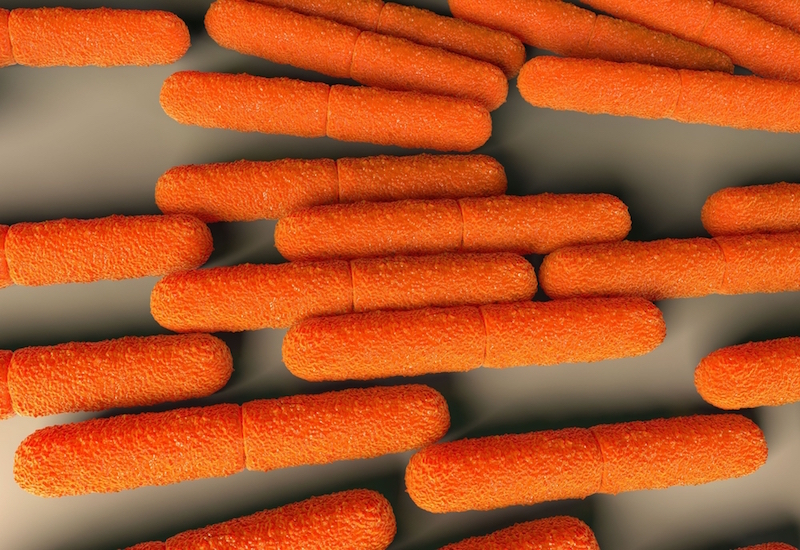Botulism: Causes, Symptoms & Treatment

Botulism is a rare but serious illness caused by toxins released by bacteria called Clostridium botulinum. These toxins are among the most lethal substances known to man, according to the World Health Organization. Even a small amount can be deadly. Fortunately, infection from this type of bacteria is rare.
Botulinum toxins affect the body by blocking nerve messages. People infected with the bacteria often experience a loss of muscle control. "They are essentially paralyzed, as the toxin surrounds those nerves and blocks those messages," said Benjamin Chapman, an associate professor and food safety specialist at North Carolina State University.
There are five main kinds of botulism, according to the Centers for Disease Control (CDC): foodborne botulism, wound botulism, infant botulism, adult intestinal toxemia botulism and iatrogenic botulism. All kinds can be fatal and are medical emergencies.
Causes & Symptoms
Foodborne botulism occurs by consuming contaminated foods or inhaling the spores of the bacteria. "It is one of scariest foodborne illnesses that we have," Chapman told Live Science. One example of foodborne botulism occurred in May 2017 when nacho cheese sauce killed one man and made nine other people ill.
Symptoms of foodborne botulism typically begin between 12 and 36 hours after ingesting the toxin, according to the Mayo Clinic, but can range from a few hours to a few days. The bacteria have an incubation period of 12 to 72 hours in children and adults. The appearance of symptoms depends on how much of the bacteria was ingested.
Common symptoms are:
- nausea
- vomiting
- abdominal cramps
- dry mouth
- difficulty swallowing or speaking
- facial weakness on both sides of the face
- drooping eyelids
- blurred or double vision
- trouble breathing
- paralysis
Another type of botulism is wound botulism. This is caused by the bacteria entering a cut, which can cause an infection that produces the toxin. People who inject drugs are more likely to get this form of botulism.
Symptoms of wound botulism are:
- trouble breathing
- difficulty swallowing or speaking
- blurred or double vision
- facial weakness
- drooping eyelids
- paralysis
Infants may be exposed to botulism, too. Infant botulism is when Clostridium botulinum spores grow in a baby's intestinal tract. This is the most common form of botulism and it usually occurs to children between the ages of 6 weeks and 6 months, according to the U.S. National Library of Medicine. Babies as young as 6 days and old as 1 year can be affected, though.
Symptoms of infant botulism usually occurs around 18 to 36 hours after the baby ingests the bacteria, which have an incubation period of 3 to 30 days in infants.
Symptoms include:
- constipation (this is often the first sign)
- difficulty sucking or feeding
- drooling
- floppy movements due to muscle weakness
- drooping eyelids
- trouble controlling the head
- weak cry
- irritability
- tiredness
- paralysis
Adult intestinal toxemia botulism is when the spores of the bacteria get into an adult's intestines. Once there, they grow and produce the toxin, according to the CDC.
An additional way a person can also get botulism is from Botox cosmetic injections. This is called latrogenic botulism. Botox is actually made from a toxin produced by Clostridium botulinum.
"Getting botulism from a Botox injection is extremely rare," said Dr. Alexes Hazen, an associate professor at the Hansjörg Wyss department of plastic surgery at NYU Langone. "The form of Botox used for cosmetic purposes is a highly regulated and attenuated form of Botox. If a person is using unregulated Botox that is not FDA approved — this could be possible."
Iatrogenic botulism can also occur when too much Botox is injected at one time, according to the CDC.
Diagnosis & treatment
To diagnose botulism, the medical professional will often do a medical exam that looks for muscle weakness or paralysis. A blood, stool or vomit analysis may also be ordered.
Treatment of foodborne or infant botulism typically includes ridding the body of the toxin by inducing vomiting or bowel movements. Wound botulism may be treated by removing the infected tissue. Antitoxins and antibiotics may also be prescribed for various forms of botulism.
After the person starts to recover, rehabilitation treatment may be needed to help retrain the body after the nerve damage from the toxins.
Prevention
There are many ways to prevent botulism. First, food should be prepared properly and stored safely. For example, when canning foods, they should be pressure cooked at 250 degrees Fahrenheit (121 degrees Celsius) for 20 to 100 minutes, depending on the food, according to the Mayo Clinic. Also, if a food container is bulging or if the food smells spoiled, it is best to throw it away.
To prevent infant botulism, do not give honey or corn syrup to babies under the age of 1 year, according to the U.S. National Library of Medicine. Wound botulism can be avoided by not injecting or inhaling street drugs.
Additional resources
Sign up for the Live Science daily newsletter now
Get the world’s most fascinating discoveries delivered straight to your inbox.










